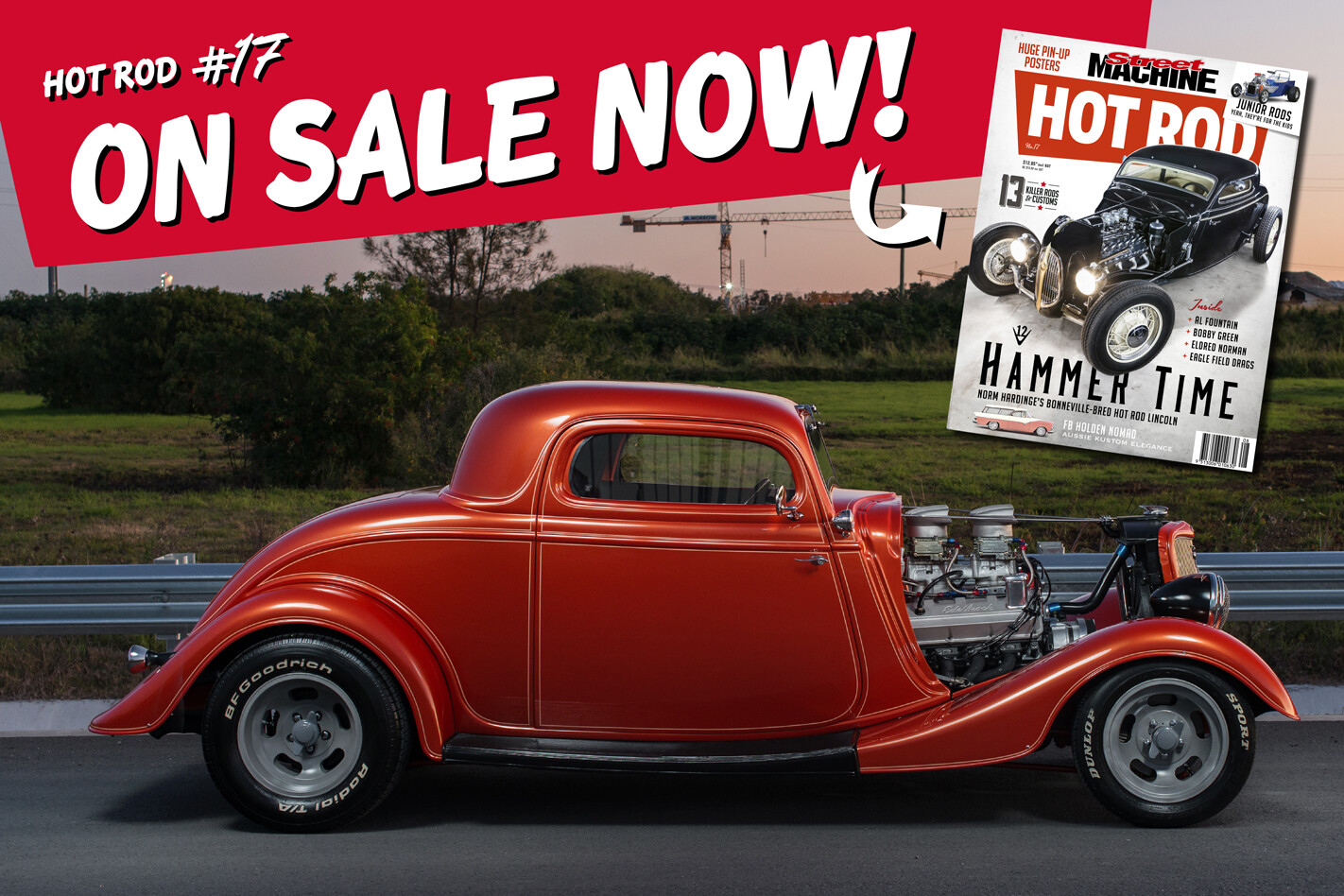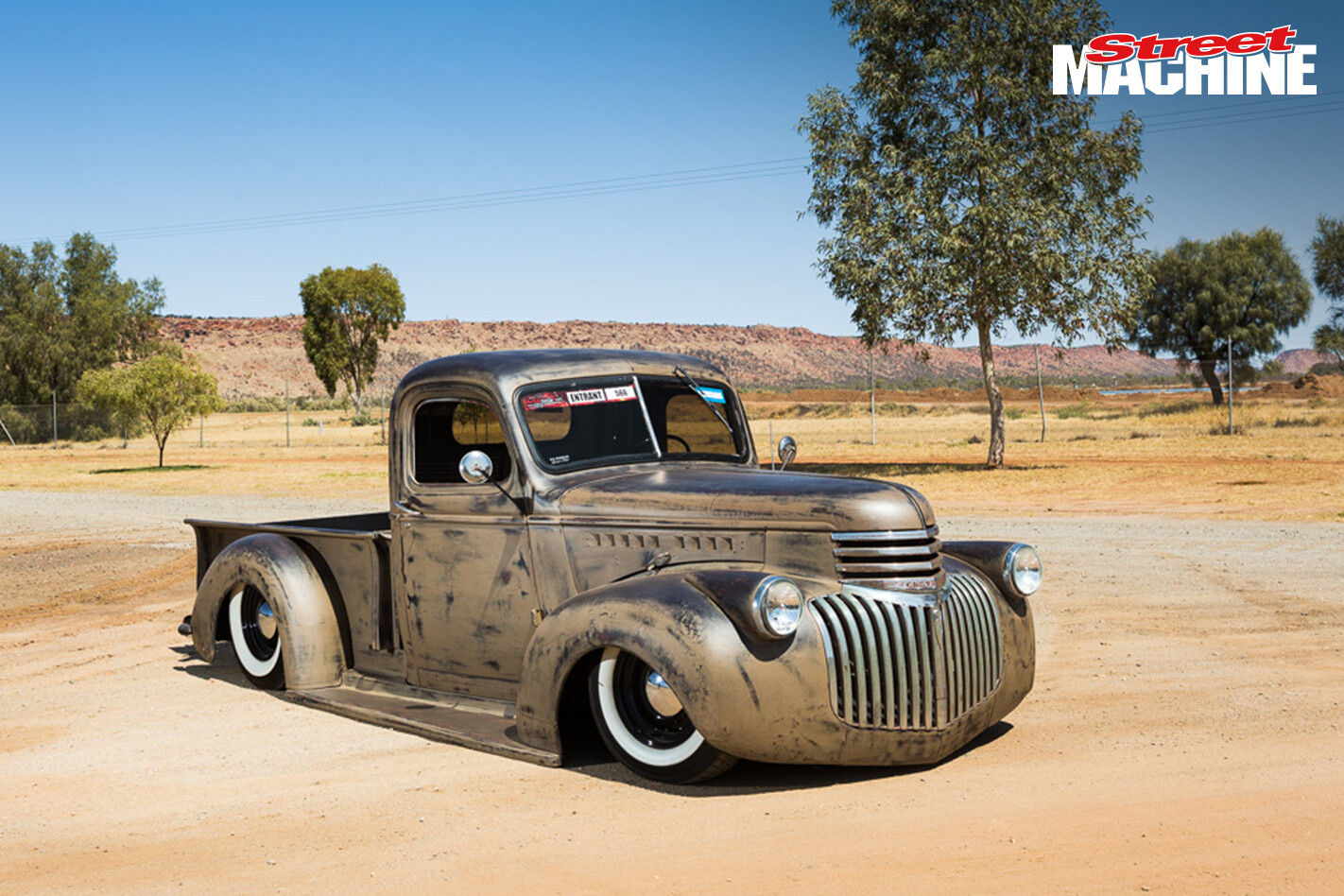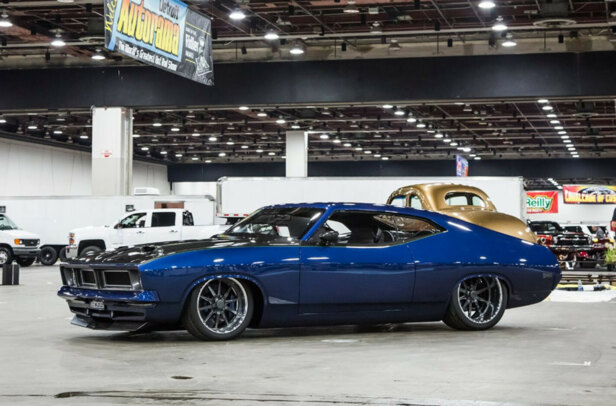This article on Eldred Normal was originally published in issue no.17 of Street Machine‘s Hot Rod magazine, 2016
THE first thing to remember about Dad,” says Bill Norman, “is that he would be completely unacceptable in today’s world. Absolutely unacceptable. He was the sort of person that the highway patrol would just have convulsions over. He had a constant running battle; but it wasn’t really a battle, as Dad always assumed the police were always there to have fun with. And all through his younger period, he did things that were on the margins of illegality on the road. And others that were plain madness!”
Eldred De Bracton Norman, 1914 – 1971. He arrived during an Adelaide summer to parents William and Alma, the second of six children and with a programmed future to study law at the state university. Eldred, however, hated the study regime, by the 24th year of his life he had established an engineering and car sales business in the city, diversifying in the early years of WWII rationing to manufacture garden tools. Then he designed and built gas producers, charcoal burning, boot-mounted water convertors, generating enough hydrogen gas fuel to drive a 1930s car, when petrol was almost unavailable. He tried to enlist but his asthma stopped that, so he married 24yo journalist Nancy Fotheringham Cato and went on making stuff and selling cars.
Eldred’s first racing car was a 1922 Lancia Dilambda V8, pictured at Helmholm in 1933, beside a little 8hp Gwynne
In an earlier year, Eldred went racing on South Australia’s Sellicks Beach. That first competition car was a stripped 1920s Lancia Dilambda V8 with 4.6 litres of overhead camshaft power, and the tall, long-legged man got to like big grunt engines. This experience was to shape his brilliant automotive engineering for the rest of his life, but he was always to remain maverick, a wild man of the open roads.
“I can remember him,” said Bill, himself a successful hillclimb racer, “doing dangerous overtaking on the road, with a car coming towards him and mum would get quite tense. Dad said: ‘Stop worrying about it, dear. The white posts on the right hand side are only four inches in diameter, and if the worst came to the worst, I could always swing off the road on the wrong side.’ And that sort of thing was just outrageous behaviour. With three kids in the back, no seat belts, essentially no brakes in those days. And I can distinctly remember him racing through the hills in a Zephyr convertible, with the whole family on board, racing against a Triumph Thunderbird motorbike. And just loving it, and throwing us all around in the car.”
Bill Norman has had a long career as a hillclimb racer, pictured here in his GEKO open wheeler
Discarded army equipment in New Guinea after the war gave Eldred an opportunity to earn good money by shipping trucks and Jeeps into Adelaide, selling these to a vehicle-starved population before the racing bug bit him again. He didn’t have much money, but he had war surplus parts and the flathead Mercury V8 engine had mobs of stump pulling torque. Eldred, as a self-taught engineer, thought outside the square and figured that where one of these engines would go well in a race car, two together would work even better. The rolling chassis would come from a Dodge weapons carrier, long enough to fit two flatheads in line to create a V16, with a two-seat alloy body to lighten the load on those massive 20-inch truck wheels. The initial construction of the car was begun in PNG and completed in Adelaide. Curious as to how Eldred achieved a reliable coupling between these sidevalve V8s, I asked Bill if he knew how that had been engineered.
The first version of Eldred’s Double V8 thundering up Glen Ewin hillclimb in August ’48
“Dad had some ideas that were simple, but brilliant. To join the two V8s, you had to have a coupling that allowed flex. In those days nobody built a chassis that was stiff. Everything moved around. So lots of couplings would have broken. So he put in a four row sprocket drive. So he had two rows on the front of the rear engine’s crank, so it had a double row chain sprocket, and the rear of the front engine had a double row chain sprocket, and then he had a big four row chain that coupled the two. So it was simply a chain coupling, and this never gave any trouble — absolutely reliable. So I thought that was very clever.”
The second version of Eldred’s Double V8 thundering up Glen Ewin hillclimb in August ’48
Eldred had the Bi-Mercury, as it was known, road registered and constantly drove the one and a quarter tonne car with its 7.8-litres of cast iron power — with no mufflers and minimal road equipment — to race meetings and hillclimbs, both in South Australia and Victoria. The truck brakes often overheated so Eldred installed twin SU electric petrol pumps linked to an onboard tank, to squirt cooling water onto the front drums via a brake pedal-operated switch. This resulted in clouds of steam that bluffed the opposition, but the innovation worked and this same system was also later used by NASCARS to cool their front discs. With 200bhp of V16 power, the car was capable of almost 200km/h, with fierce acceleration. In its final single seat form, the decision was made to contest the 1951 AGP meeting at Western Australia’s Narrogin circuit, but Norman the Wizard needed a trailer.
The quad-cam, 4.6-litre Lancia V8 at Sellicks Beach, South Australia
“Not all of his ideas worked,” laughs Bill. “And that trip with the Double V8 to WA was one that definitely didn’t. His thinking was that he wanted to keep the trailer nice and low, so that the car would be easy to load. And to help avoid punctures, he’d use lots of axles, to spread the load. So he built this long trailer for the Double V8, and used many axles with wheelbarrow wheels and tyres. He carried dozens of spares on the truck. It seemed to work quite okay around Adelaide, but when he set off with the little wheels running constantly at highway speeds, they got hotter and hotter and they blew, and they blew, and they blew. And even though he had dozens of spares, he almost ran right out on the way over. So it was touch and go if he was going to get there. It was just an idea that wasn’t right. I think it was a crazy idea to start with. But then the average loading on each tyre wasn’t very great. The trouble is, when you went over bumps and with the point load, it was much higher than was practicable.”
Eldred frequently drove the monster to race meetings, including this one at Fisherman’s Bend, in October 1949
Narrogin, a combined street and country roads circuit of 7.1km in length, was a disaster for Eldred’s V12. The front suspension broke during lap seven and he retired the car, only to sell the Bi-Mercury to local Syd Anderson after the event, probably along with the tiny tyred trailer, and purchased an imported 6CM Maserati Voiturette monoposto that had died on lap 19 with a blown clutch. The 1936 Italian built car had a supercharged 1.5 litre, six-cylinder engine burning alcohol and was uncompetitive on the European circuits. Eldred bought it anyway and drove home to fix the clutch and add another supercharger.
The Maserati Type 6CM. Eldred not only added another supercharger to the car, but later reconstructed the 1.5-litre engine from scratch, fabricating a new block and heads
“He used to regularly test the 6CM in the hills all around our house,” said Bill. “Roar up Anstey’s Hill, and it was incredibly loud. When he bought it, it was only single-stage supercharged. And then dad double-stage supercharged it. He had seen Alfa have success with a two-stage blower with a 1.5-litre engine, so he figured it would work for him, too. But the car became horrendously unreliable and melted pistons frequently — with the benefit of hindsight, you can see that he was unable to get enough methanol into it. He took it all the way to Bathurst for big meeting and it did a piston after a few laps. Finally, it blew itself to pieces.”
Eldred’s last hit out with the Double V8 or Bi-Mercury was at the 1951 AGP in Narrogin, WA. He pulled out on lap seven with a broken suspension linkage, but led the race for three laps — each lap measuring 7.1km
So Eldred Norman, totally untrained as a fabrication engineer, sat down and welded up two new three cylinder blocks out of steel plate and pipe, designed a replacement twin cam head which was cast in bronze and adapted Singer conrods and BSA pistons and went racing again. He was probably delighted to sell it in 1953, after which the new owner had almost a full year of unbelievable reliability! The car went through a number of hands, before being sold back to a buyer in Europe, after which it was reportedly purchased by F1 supremo, Bernie Ecclestone.
Eldred’s love-affair with supercharging took off when he fitted a GM 2/71 blower to a Triumph TR2, coming fourth in the 1954 Australian Grand Prix
In 1954, the annual AGP meeting was to be run on a rough and grotty road circuit at Southport, on Queensland’s Gold Coast. Eldred bought a new Triumph TR2, added wire wheels and an overdrive unit, fitted a GM 2/71 supercharger driven by four v-belts and converted the car to run on straight methanol. He made a towbar, hooked on a trailer to carry two 200-litre drums of alcohol fuel, got into the car and drove all the way to Southport. He won both curtain raiser sports car races, which qualified the TR2 to start in the 248km AGP. With 12 pounds of boost from the blower, he raced without incident into fourth place in an event which was dominated by purpose-built racing cars. Norman the Wizard would have placed higher, but the v-belts loosened off and the boost dropped to eight PSI, and he had to nurse the engine to the finish.
For the Eclipse Zephyr, Eldred fitted a Wade blower to the 2.3-litre Ford six, fed by a 57mm SU carb. The car was built in ten weeks and finished 8th at the 1955 AGP
The Triumphant Triumph was sold, and delivered into obscurity. But there was a home AGP waiting for him in 1955 and in just ten weeks, Eldred built his most amazing creation. Short, light and cheap to construct, this incredible design featured a 2.3 litre, six-cylinder Ford Zephyr engine inclined to the right at 45-degrees. Bolted to the front of that was a complete FJ Holden front crossmember assembly, and a huge Ro20 Wade supercharger inhaled through a 57mm SU carburettor to deliver 12psi of boost. Instead of a regular chassis, he employed 150mm steel tube running back to a German light truck transaxle. The original third gear became first and two higher gears completed the now three -speed gearbox. The rear end was independent, the aluminium single seat body covered the 150 litre methanol fuel tank next to Eldred, and he sat on the right with his legs under the engine. The car had brutal acceleration, virtually no brakes and ran on road crossply boots delivered free of charge by Adelaide’s Hardie Tyre Company. On a good day, Eldred could blow off most of the imported, factory-built racing cars. At the AGP, he was seventh on the starting grid, lost two laps in the pits through overheating, and finished eighth behind the winning Cooper Bristol of Jack Brabham.
Eldred and his wife Nancy with a telescope in the rotating observatory built by Eldred. Nancy had an amazing career of her own as a journalist, poet, novelist and activist
Shortly after that, Nancy Cato stopped the wizard from building an even faster car, so he sold the Eclipse Zephyr, and retired from racing to make precision machinery to grind mirrors for his self-built astronomy telescopes amongst many other pursuits and adventures. He later diversified into manufacturing the famous vane-type superchargers that bear his name, but that is a story for another time.




Comments